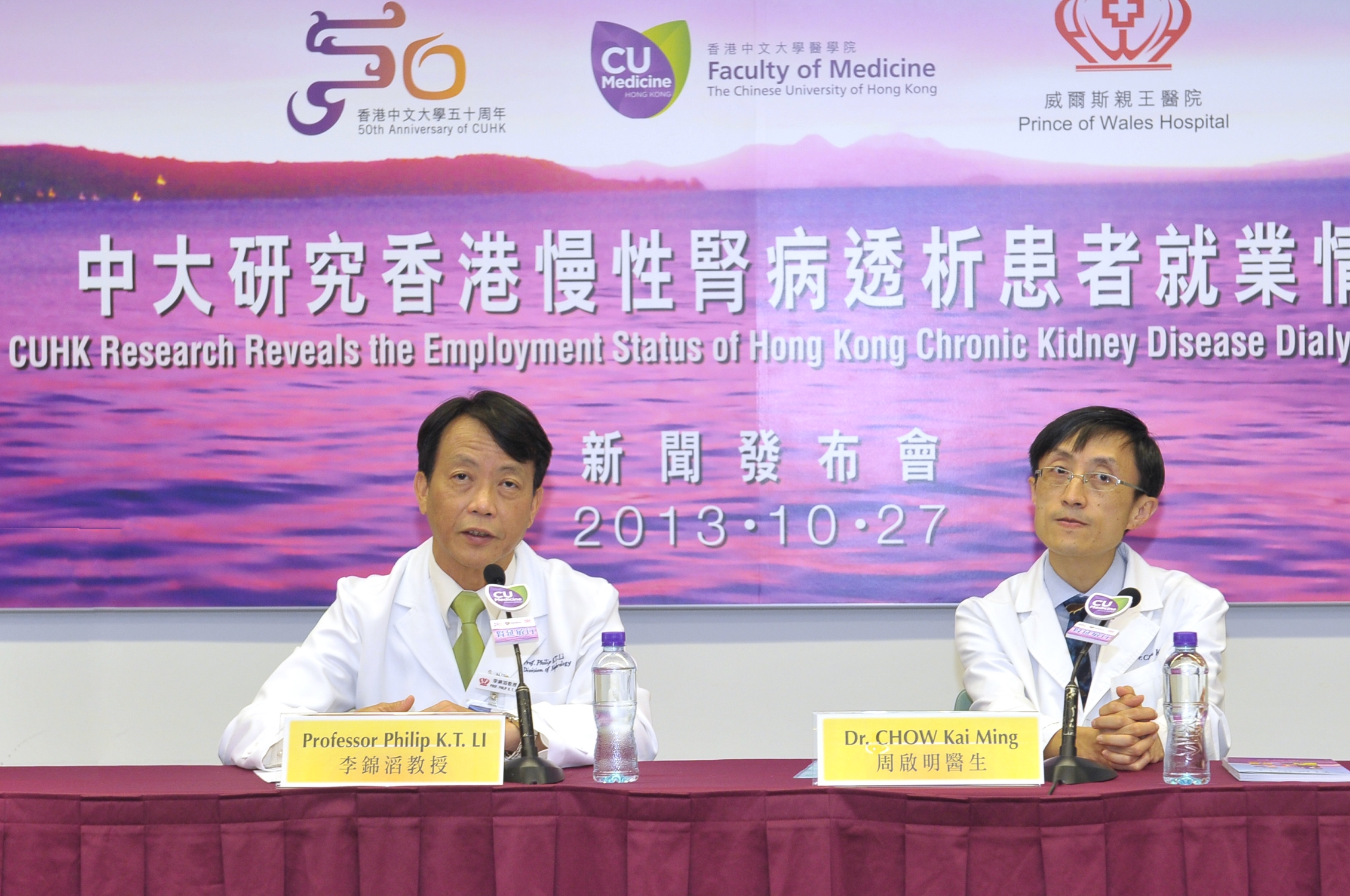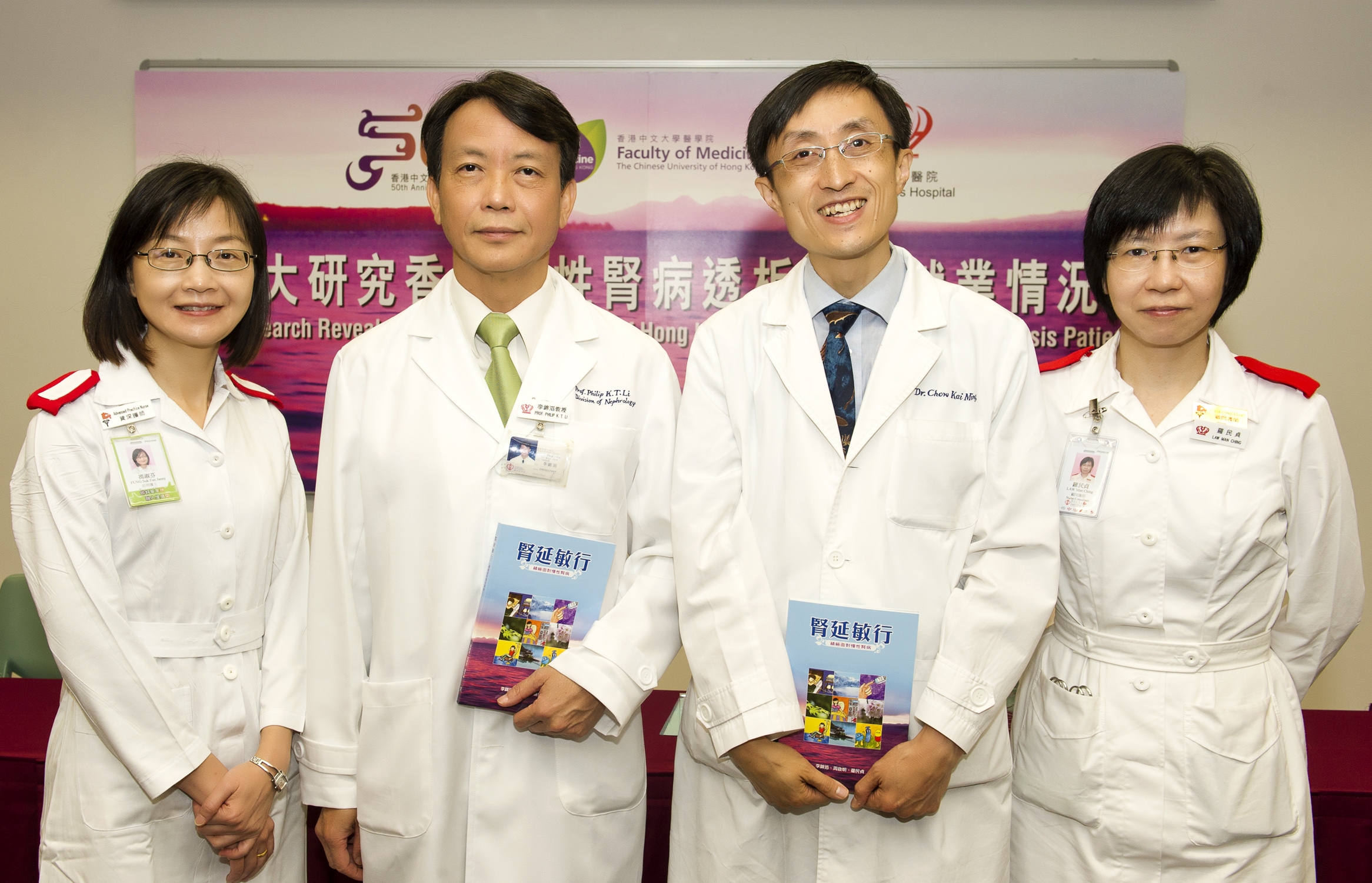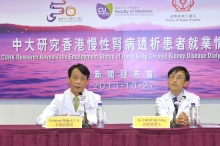CUHK
News Centre
CUHK Releases Research Results on Employment Status of Hong Kong Chronic Kidney Disease (CKD) Dialysis Patients and Promotes Predialysis Education Programme for Mid to Late Stage CKD patients
According to the statistics released by the Hospital Authority in Hong Kong, there were 4,758 Chronic Kidney Disease (CKD) dialysis patients in 2012 in the territory, of which 3,692 patients (77.6%) were on peritoneal dialysis (PD) and 1,066 patients (22.4%) were on hemodialysis.
A research team led by Prof. Philip Kam Tao LI, Chief of Nephrology and Honorary Professor, and Dr. Kai Ming CHOW, Honorary Clinical Associate Professor, Department of Medicine and Therapeutics at The Chinese University of Hong Kong (CUHK) has recently studied the employment status of CKD patients on peritoneal dialysis in the Prince of Wales Hospital. Of the 383 patients, 202 were males (52.7%), mean age 60 years, nearly half of them had diabetes (49.9%), the average time on peritoneal dialysis was 3.6 years, with 15.1% on home machine-assisted peritoneal dialysis. Of the group aged 18-60 year-old excluding housewives, the work or employment status of those patients are as follows: full-time work (23.4%), part-time work (9.4%), able to work but without being employed (39.1%). The study shows that the unemployment rate of the CKD dialysis patients is much higher than the current unemployment rate of the general population of Hong Kong (3.3%). It is also found that some clinical factors, such as the use of machine-assisted home peritoneal dialysis, younger age, and with education level above primary, contribute to a higher employment rate of these patients.
The Division of Nephrology, Department of Medicine and Therapeutics at CUHK has designed a Predialysis Education Programme (PDP) for all mid to late stage CKD patients. Doctors, nurses, medical social workers, dietitians and patient self-help group members of the nephrology team are enlisted to help patients and their family members understand CKD, kidney failure and its treatment method. This helps enhance their knowledge on renal replacement therapy, including dialysis and kidney transplant and their ability to adapt. This also helps them understand the renal services and arrangements, and to build trust between patients and the nephrology team. Data of the survey show that CKD patients who had gone through PDP before they reached the stage of requiring dialysis, was conducive to their continued employment after dialysis. Those patients who had received PDP 6 months or earlier prior to their dialysis had an employment rate of 43.5%, which was much higher than those who had not received PDP (16.7%).
CUHK advocates early treatment of chronic kidney disease patients and encourages the mid and late stage CKD patients to receive PDP in order to achieve better rehabilitation and employment results. CUHK also suggests that the general public and employers should enhance the understanding of CKD. Employers are encouraged to provide better work environment and flexible schedules for dialysis patients as it can improve their rehabilitation.
(From left) Prof. Philip Kam Tao LI, Chief of Nephrology and Honorary Professor, and Dr. Kai Ming CHOW, Honorary Clinical Associate Professor, Department of Medicine and Therapeutics at CUHK present their recent research findings on the employment status of chronic kidney disease dialysis patients on peritoneal dialysis in the Prince of Wales Hospital.





